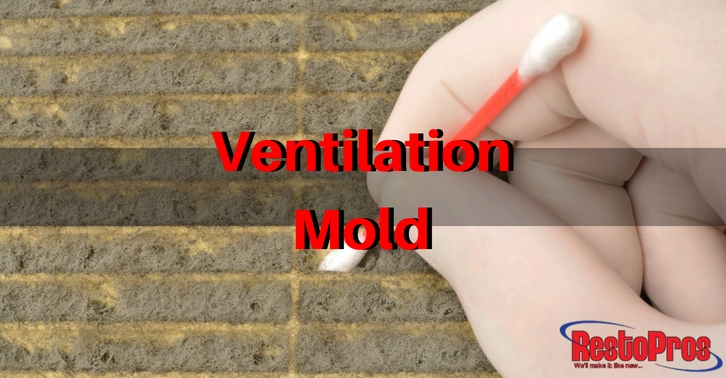 If you’ve noticed increased allergies whenever you turn on your HVAC or furnace, it might be a sign that there’s a mold infestation hidden within your ventilation system. While mold that’s hiding in walls, corners, and carpets can be hazardous to your health, exposure is, though only for the moment, limited to the room where the mold is contained. Ventilation mold isn’t limited. The second your fan kicks on, harmful spores are being distributed throughout the building.
If you’ve noticed increased allergies whenever you turn on your HVAC or furnace, it might be a sign that there’s a mold infestation hidden within your ventilation system. While mold that’s hiding in walls, corners, and carpets can be hazardous to your health, exposure is, though only for the moment, limited to the room where the mold is contained. Ventilation mold isn’t limited. The second your fan kicks on, harmful spores are being distributed throughout the building.
In addition to being a major health concern, mold growth in your climate control system poses a risk to the HVAC and furnace units themselves. Mold growth can lead to costly future repairs and even if it doesn’t, the longer you leave it unattended, the more expensive clean up can become.
How to Remove Mold from your AC System, Furnace, and Vents
Conduct a thorough inspection first. Look at cooling units, the furnace surfaces, piping, and the insides of ventilation ducts to find the mold. Any pooling water or damp surfaces should be examined and dried out. Follow water to its source and repair any leaks or drips. Clean out condensation lines to allow for proper drainage.
Contact a professional to have large-scale mold infestations removed from the system. The entire unit needs to be cleaned and dried out to prevent a resurgence of mold after remediation. If the infestation is minor, clean the surface with warm water and detergent, then dry all surfaces. Replace the air filter to remove the last traces of spores and mold in your system.
Follow up any cleaning with the proper prevention techniques.
How to Prevent AC and Furnace Unit Mold
- Have your system inspected and maintained regularly. Most HVAC professionals recommend getting a major maintenance done annually for each unit. That means a maintenance in the spring and one in the fall.
- Improve or clean out the drainage systems for your unit. All HVAC and furnace units have drip pan or condensation line to remove condensing water and drain it away from the unit. If you notice pooling water, this line has likely become too clogged to allow for proper drainage.
- If the mold growth was due to increased humidity in your home, invest in a dehumidifier to lower the average humidity in your home. Adding fans or space heaters to especially humid rooms will help to keep them drier as well.
- Consult a professional to make sure your home is insulated properly. Improper insulation can lead to condensation collecting on other surfaces, which will feed mold spores and cause them to take root within ventilation ducts, crawl spaces, or sealed areas.
Don’t forget to follow RestoPros on Facebook, Twitter, LinkedIn, and Google+ for new Updates, News, and Discounts!
